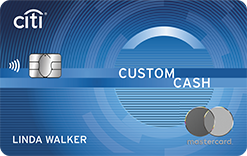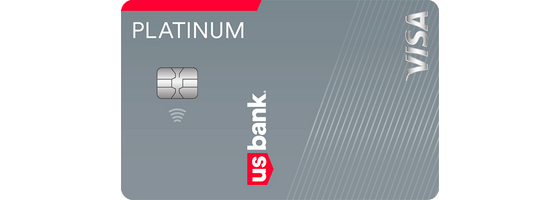- 5% cash back on up to $500 in your highest eligible spend category per billing cycle
- Annual fee: $0 (Rates & Fees)
- Intro APR: 0% for 15 months
Our evaluations and opinions are not influenced by our advertising relationships, but we may earn a commission from our partners’ links. This content is created independently from TIME’s editorial staff. Learn more about it.
While no credit card has a 0% APR forever, some won’t charge any interest for a lengthy period. These cards can help you save money, consolidate debt and, in some cases, take advantage of nice perks and rewards. Some of the best 0% APR credit cards have interest-free periods lasting more than two years.
The most important considerations when applying for a 0% APR credit card are the regular APR that kicks in after the intro offer expires, the annual fee, and the minimum credit required. You may also want to consider the card's welcome offer and other perks.
To help you decide, we found the best credit cards with 0% APR. We’ll break down why we picked them and how they can help you reach your financial goals.
Best 0% APR credit cards: Summary
- Best for bonus category cash back: Citi Custom Cash® Card
- Best for flexible rewards: card_name
- Best for simple travel rewards: card_name
- Best for gas, groceries, and online purchases: card_name
- Best for no late fees: card_name
- Best for long 0% intro APR for both balance transfers and purchases: U.S. Bank Visa Platinum® Card
Why we recommend these cards
Best for bonus category cash back: Citi Custom Cash® Card

Citi Custom Cash® Card
Citi Custom Cash® Card
Rewards: Earn 5% cash back on the first $500 you spend in your highest eligible spend category each billing cycle. After, cash back falls to 1%, which is the same rate that applies to all other purchases.
Welcome offer: bonus_miles_full
Special Travel Offer. Earn an additional 4% cash back on hotels, car rentals, and attractions booked on Citi Travel℠ portal through 6/30/2025.
Why we chose it: This card lets you earn 5% cash back on up to $500 spent in your highest eligible spending category each billing cycle (then 1% thereafter). While the $500 cap is a bit limiting, it resets every billing cycle, and you don’t have to keep track of rotating 5% categories. The card also offers a 0% for 15 months intro APR rate and balance_transfer_intro_apr,balance_transfer_intro_duration intro balance transfer rate.
Pros & cons:
Pros:
Cons:
- High spend amount to earn welcome offer
- $500 cap could be limiting for some
Learn more from our full review.
Best for flexible rewards: card_name
Chase Freedom Unlimited®
Why we like it
The card_name is a solid flat-rate earnings card with annual_fee_disclaimer annual fee. Although the 1.5% cash back doesn’t seem impressive at first glance, it becomes more valuable when combined with other rewards cards from Chase that can be redeemed for a far greater value.
This card is recommended for everyday use, whether for doctor copays or big box store purchases. It can be a large earner for cardmembers who want to get the most out of their everyday spending.
Rewards: Earn unlimited 5% cash back on Chase Ultimate Rewards Purchases, 3% cash back on dining and drugstore purchases, and 1.5% cash back on all other purchases
Welcome offer: bonus_miles_full
Why we chose it: The card_name is one of the best 0% APR credit cards thanks to its generous cash back, intro APR, and welcome offer. It has a bonus_miles_full and a balance_transfer_intro_apr,balance_transfer_intro_duration and intro_apr_rate,intro_apr_duration.
Pros & cons:
Pros:
- annual_fees annual fee
- Several bonus cash-back categories
- Earns 1.5% cash back on non-bonus spending
- intro_apr_rate,intro_apr_duration
- Low spending requirement to earn welcome offer
Cons:
- Some cards have longer 0% APR periods
- Some alternatives have higher cash-back rates on all purchases
- foreign_transaction_fee foreign transaction fee
Read our full review here.
Best for simple travel rewards: card_name
Rewards: Earn five miles per dollar on travel booked through Capital One Travel, plus 1.25 miles on all other purchases
Welcome offer: bonus_miles_full
Why we chose it: This card might be the right choice if you want a travel card with annual_fees annual fee and don’t mind booking through Capital One Travel. With this card, you earn five miles per dollar spent on travel booked through Capital One as well as 1.25 miles on all other purchases without any limits. There is also a intro_apr_rate,intro_apr_duration and balance_transfer_intro_apr,balance_transfer_intro_duration.
Pros & cons:
Pros:
- Five miles per dollar on travel booked through Capital One
- 1.25 miles on all other purchases
- annual_fees annual fee
- balance_transfer_intro_apr,balance_transfer_intro_duration
Cons:
- Lacks benefits you get with some competitors, like cell phone insurance and trip cancellation insurance
- APR goes up to reg_apr,reg_apr_type
- Requires credit_score_needed credit
Read our full review here.
Best for gas, groceries, and online purchases: card_name
Rewards: 3% cash back on up to $6,000 spent on gas, groceries, and online purchases. This limit resets each year and is per category, meaning $18,000 overall. For all other purchases, there’s cash back of 1%
Welcome offer: bonus_miles_full
Why we chose it: The card_name is a great choice for most consumers in the U.S. That’s because it earns 3% back on up to $6,000 spent per year in each of the following categories: gas, groceries, and online purchases.The card also comes with a intro_apr_rate,intro_apr_duration (Rates & Fees), an $84 Disney bundle credit, a $180 Home Chef credit, and $200, providedyou spend $2,000 in purchases in the first six months.
Pros & cons:
Pros:
- 3% back at gas stations, supermarkets, and on online retaIl purchases on up to $6,000 per year in purchases, then 1%
- $7 back each month after using your Blue Cash Everyday Card to spend $12.99 or more each month on an eligible subscription to The Disney Bundle, which includes Disney+, Hulu, and ESPN+. Enrollment required.
- annual_fees annual fee
- intro_apr_rate,intro_apr_duration
Cons:
- Very high spend to earn the welcome offer
- Earns 1% cashback outside of bonus categories
- Bonus categories are capped
Learn more on our full review here.
Best for no late fees: card_name
Rewards: None.
Welcome offer: bonus_miles_full
Why we chose it: card_name is the best choice if you want the longest period with no APR. Not only does it have a balance_transfer_intro_apr,balance_transfer_intro_duration, but there are also no late fees and no penalty APR. In addition, there is a intro_apr_rate,intro_apr_duration from the date of account opening.
Pros & cons:
Pros:
- Annual fee: annual_fees
- $0 liability on unauthorized charges
- Ability to set your own due date
Cons:
- No rewards or welcome offer
- Balance transfers must be completed within first four months
- 5% balance transfer fee after first four months of account opening
Learn more on our full review here.
Best for long 0% intro APR for both balance transfers and purchases: card_name

U.S. Bank Visa Platinum® Card
U.S. Bank Visa Platinum® Card
Rewards: N/A
Welcome offer: N/A
Why we chose it: If your main concern is having the longest 0% APR period possible for both balance transfers and purchases, this card might be the right choice. It has a balance_transfer_intro_apr,balance_transfer_intro_duration. However, it doesn’t earn rewards and there’s no welcome offer.
Pros & cons:
Pros:
- balance_transfer_intro_apr,balance_transfer_intro_duration
- annual_fees annual fee
- $600 of cell phone insurance
Cons:
- Doesn’t earn rewards
- No welcome offer
- Variable APR is on the high end
Best 0% APR credit cards comparison chart
| Card name | Intro APR | Annual fees | Credit score needed |
|---|---|---|---|
0% for 15 months | credit_score_needed | ||
intro_apr_rate,intro_apr_duration | annual_fees | credit_score_needed | |
intro_apr_rate,intro_apr_duration | annual_fees | credit_score_needed | |
intro_apr_rate,intro_apr_duration (Rates & Fees) | annual_fees (Rates & Fees) | credit_score_needed | |
intro_apr_rate,intro_apr_duration | annual_fees | credit_score_needed | |
0% APR on purchases for 18 billing cycles | $0 | Good |
Our methodology
Selecting the best credit cards in any category is never easy because there are so many things to consider. To find the best 0% APR credit cards, we compared card offers based on the following criteria:
- Rewards rates (when applicable)
- Welcome offers (when applicable)
- Rewards flexibility
- Introductory APR offers
- Variable APRs
- Annual fees
- Consumer protections
- Travel benefits and perks
- Travel insurance benefits
- Credit rating required
For this particular list, only credit cards with a 0% intro APR were considered. The cards selected have the best combination of a long interest-free intro period, no annual fee, attractive rewards structures, and lucrative welcome offers. Some cards that don't offer rewards were evaluated based on other factors, including their fee structure, introductory interest rates, and regular variable APR. Benefits such as consumer protections and travel insurance perks were also taken into account.
How will your credit score affect interest rates?
Generally, higher credit scores result in lower interest rates, and lower credit scores result in higher interest rates. Some credit card issuers use a variable APR, which means rates can change over time. Rates may fluctuate based on factors like interest rates in the U.S. However, having a higher credit score will result in a lower initial rate.
Who will get approved for a 0% APR credit card?
While there are many factors in a credit score, the following may increase your approval odds:
- Good to excellent credit. These cards are typically marketed to those with good to excellent credit. Generally, the higher your credit score, the better your approval odds will be.
- Stable income. Having a stable income can increase your approval odds as well. Credit issuers like to see consistent income from one month to the next. From their perspective, a regular stream of income increases the likelihood of you making payments consistently.
- Low debt-to-income ratio. This shows how much you owe each month versus how much you earn. A lower ratio suggests you have enough income to cover your debts, making you a less risky borrower.
- Strong credit history. Card issuers may consider your credit history as a whole. Not having bankruptcies, late payments, or high credit utilization in the past will work in your favor.
- Low number of recent credit applications. Having too many recent credit applications could indicate you are in trouble financially. Thus, credit card issuers like to see a low number of recent applications.
How to choose the best 0% APR credit card for you
To find the best 0% APR credit card for you, compare what each of them offers using the table at the beginning of this article. While there are many good choices, different credit cards are good for different things.A good starting point is to consider each card’s:
- Rewards structure
- Welcome offer
- Annual fee
- Minimum credit score
The best choice for you may not be the best choice for someone else. A lot depends on how you intend to use the card. For example, if you are a frequent traveler, it probably makes more sense to pick a card with the best travel rewards. But if you don’t often travel, you may want one that earns the most cashback on everyday purchases. Ultimately, your situation will determine which choices make the most sense for you.
How to use your 0% APR credit card after you’ve been approved
The best way to use a 0% APR credit card is as a tool to wipe out your debt as quickly as possible. You can also use them to finance a large purchase, such as a home improvement project or a vacation.
In all cases, you should refrain from using these cards unless you’ll have the cash to repay what you spend on them before the 0% APR period expires, which is generally within 15 months. Their regular APRs can be quite high, so you likely won’t end up saving money unless you can repay the debt quickly.
You can also use a 0% APR credit card as a debt consolidation tool. If you have five credit cards and are having difficulty keeping up with all of them, you can use a 0% APR card to transfer those balances to a single card. Of course, that will only be possible if your combined balance is less than or equal to the limit on your 0% APR card.
Alternatives to 0% APR credit cards
While 0% APR credit cards have their benefits, they may not be for everyone. As mentioned in the previous section, they aren’t ideal if you can’t repay your balances quickly. In addition, not everyone has the credit necessary for approval.
If a 0% APR credit card isn’t for you, consider one of the following alternatives:
- Personal loans: Personal loans might be ideal for financing a major purchase. This is especially true if you don’t have the cash to repay your balances. Personal loans can have fixed APRs that may be lower than those on credit cards and are a potentially better option if you are better suited to paying back what you owe steadily rather than in one lump sum.
- Low-interest credit cards: There are some credit cards that may not come with a 0% intro APR, but their ongoing APR is lower than those meant for balance transfers. These cards can be easier to qualify for and manage.
- Home equity line of credit (HELOC): These lines of credit allow you to borrow money against the equity in your home. This makes them secured loans, which can lower your interest rate. However, it also means there is the possibility of losing your home if you can’t make your payments.
- Buy now, pay later (BNPL): These programs let you pay off purchases over time, often with little or no interest. However, you should pay attention to the terms, as some may have deferred interest clauses where interest is retroactively applied if not paid off in time.
TIME Stamp:
Having a 0% APR credit card can be a great way to eliminate your debt or finance a major purchase. However, they tend to require good to excellent credit, and generally are best to avoid if you aren’t good at managing money and are unlikely to have the means to pay the balance off when the 0% APR promotion expires. If 0% APR credit cards aren’t the right fit, you might consider personal loans, low-interest cards, a HELOC, or BNPL.
For rates and fees of the card_name, please visit this URL.
Frequently asked questions (FAQs)
What are the pros and cons of 0% APR credit cards?
0% APR credit cards have many benefits, including the ability to pay off your balances interest-free and consolidate your debt. These cards can also offer extras such as welcome offers and cash back rewards.
However, they tend to require good to excellent credit, and their variable APRs can be high. In addition, 0% APR credit cards sometimes lack the perks of credit cards not intended for balance transfers.
0% APR vs low-interest credit cards
One of the biggest differences between 0% APR and low-interest credit cards is in their ongoing APRs. For example, compare the card_name to the Citi Custom Cash® Card. The former has a variable APR that can be 1% lower than the latter. Low-interest credit cards might also have perks 0% APR cards lack, such as cell phone insurance and trip cancellation insurance.
How can I lower the APR or interest rate on my credit card?
There are several ways to lower your APR or interest rate. You can sometimes call the card issuer and ask for a lower rate—they might be willing to negotiate if you’ve been a good customer. Or, you might qualify for a better interest rate later if your credit score improves or you regularly make on-time payments. With some credit cards, such as the card_name, this will be done automatically.
The information presented here is created independently from the TIME editorial staff. To learn more, see our About page.

